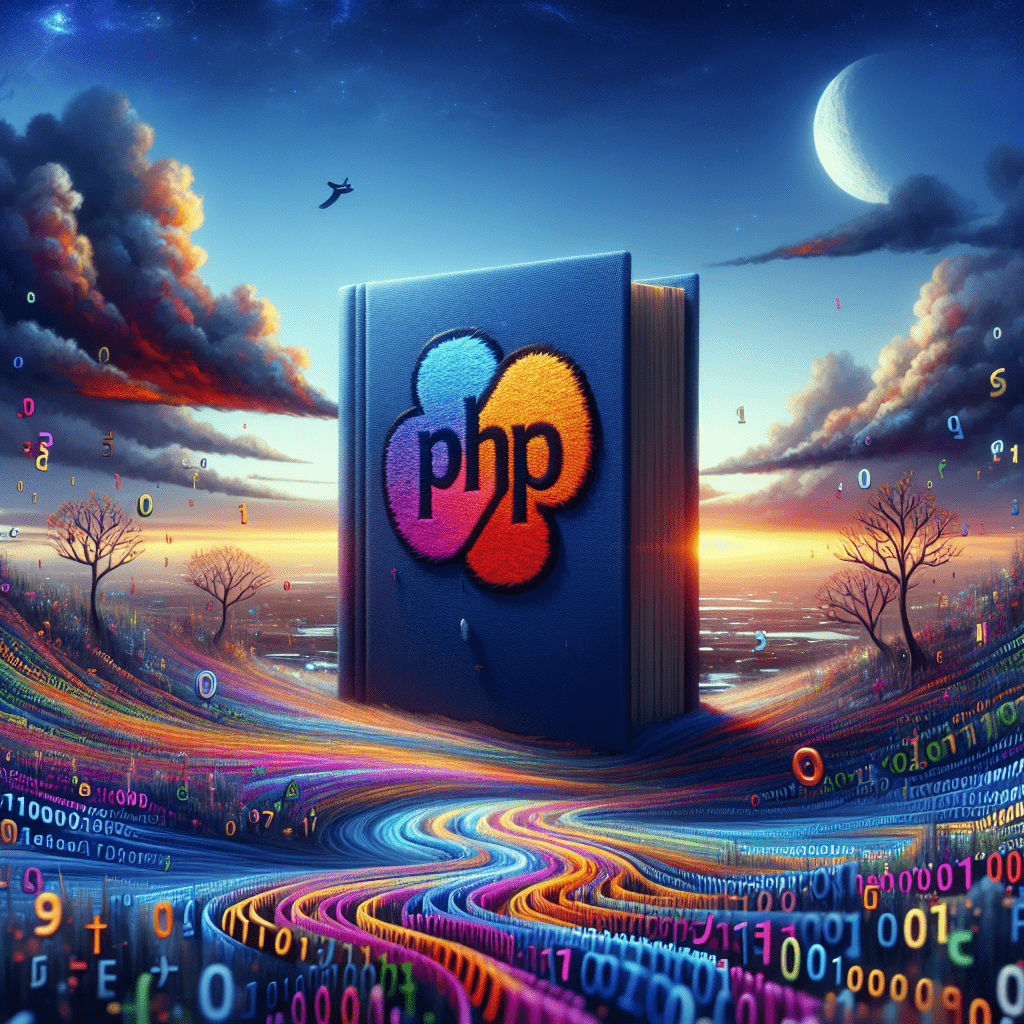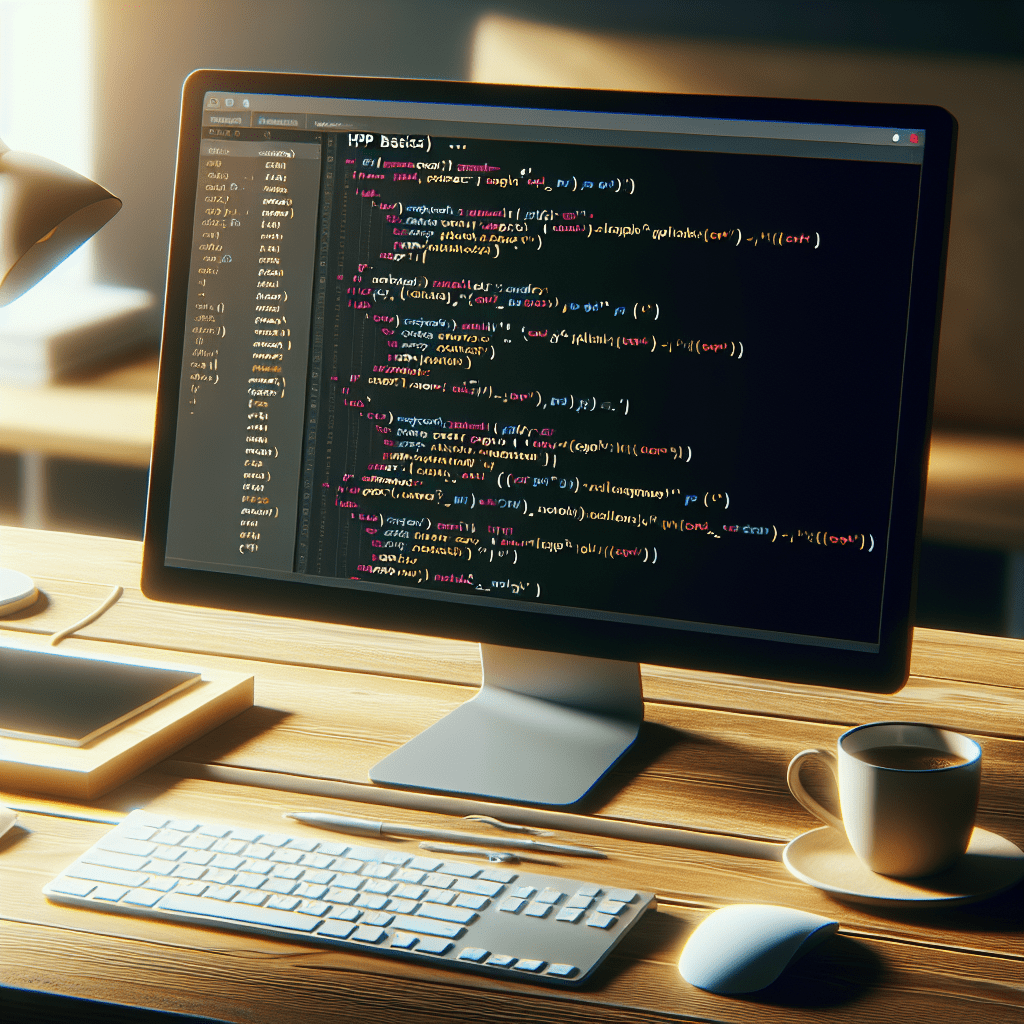Introduction
Brief presentation of Python and PHP
In the realm of programming, two languages often come to the fore in any discussion: Python and PHP. Python is a high-level, interpreted programming language reputed for its clear syntax and readability. First introduced in the late 1980s, Python’s design philosophy emphasizes code readability, making it a favorite among beginners and seasoned developers alike.
On the other hand, PHP, an acronym for ‘Hypertext Preprocessor’, is a popular general-purpose scripting language that is particularly suited to web development. Dynamic websites and app back-ends are often built using PHP. Use of PHP has grown rapidly since its introduction in 1994, greatly influencing the world of web application development.
Overview of programming language use in the digital world
In today’s digital world, the use of programming languages like Python and PHP is indispensable. They are the backbone of everything, from simple websites to complex system algorithms. The choice of programming language affects not just the functionality of a website or system but also the efficiency and productivity of developers.
However, no single programming language can be an all-rounder. Different languages are designed for specific tasks. It is here that understanding the unique strengths and potential shortcomings of popular languages such as Python and PHP becomes critical.
Purpose and significance of understanding the differences between Python and PHP
To make an informed choice of the right programming language for a project, a developer must understand the key differences between the available options. This essay aims to shed light on the distinct attributes, pros and cons, and suitable applications of both Python and PHP.
The importance of this comparison extends beyond individual project requirements. Understanding the key distinctions between Python and PHP can contribute significantly to broader knowledge building in the field of programming. It allows for a more comprehensive understanding of how different languages interact with various platforms and technologies, thereby enabling the more effective development of the future digital world.

Examination of Python
Comparison of Python’s syntax to PHP’s
Detailed look at Python syntax
In any discussion of Python, you will undoubtedly hear about its syntax. Python is lauded for its clean, simple syntax that makes it one of the most user-friendly languages for beginners. Unlike many other programming languages, Python avoids complex syntax rules and embraces a layout that is readable and easy to understand, almost like reading regular English.
Key benefits of Python syntax
Python’s clear syntax brings numerous benefits. For starters, it significantly speeds up the coding process, as developers spend less time deciphering complex code structures. Troubleshooting and debugging are also more straightforward due to the ease of code readability, leading to enhanced productivity and faster project completion times.
Compared to the PHP coding language, where sometimes curly brackets and dollar signs might confuse or intimidate a newcomer, Python’s easygoing approach to syntax can be a relief for many – especially those just stepping into the realm of programming.
Why Python syntax matters for developers
Syntax directly impacts a developer’s workflow and overall productivity. Python’s straightforward syntax allows for swift, efficient coding, reducing the potential for errors found in more complex syntax structures, like that of PHP or JavaScript. The simplicity of Python’s syntax also makes it an excellent starting point for those interested in learning to code or refreshing their programming skills.
Review of Python’s applications
Unveiling the common uses of Python
Python is versatile and adaptable, making it suitable for a broad range of applications. As a general-purpose language, Python can be used to develop desktop applications, web applications, and data analysis tools. Major tech companies, including Google, Facebook, and Instagram, use Python for their computational needs.
Examination of well-known platforms utilizing Python
Renowned platforms such as YouTube, Dropbox, and Reddit use Python for its fast and easy coding benefits. Python’s powerful features and vast libraries allow these platforms to handle large data volumes and complex functions with ease. Furthermore, Python has a growing presence in the field of artificial intelligence and machine learning, contributing extensively to modern data science developments.
Impact of Python’s applications on its popularity
The broad application possibilities of Python exponentially increase its popularity among developers. Being a language capable of building simplistic scripts to powering machine learning algorithms, the versatility of Python holds its place as a widely-used programming language. Python’s constantly growing array of libraries and modules further enhances its popularity, providing developers with pre-made solutions to common programming tasks.
Overview of Python’s performance
Review of Python’s speed and efficiency
Despite Python’s interpreted nature, which can slow down execution compared to compiled languages, it boasts efficient and fast development times due to its simple syntax and readability. This language’s data structures are also efficient, facilitating faster algorithm execution, particularly essential in computational and data analysis tasks.
Analysis of Python’s stability and security
Python is known for its stability, with frequent version updates ensuring improved security and debugging of potential issues. Python continues to stand robust in the face of evolving security challenges, reducing vulnerabilities, and mitigating risks.
Reflection on user experience with Python
From beginners to experienced programmers, Python offers a user-friendly experience with a learning curve that’s less steep than many other languages. Python’s community is a testament to the positive user experience it provides. This vast, open-source community offers excellent support, reliable version releases, and an array of third-party modules, which only enhances the overall experience of coding with Python.

Breakdown of PHP
Exploration of PHP’s syntax in contrast to Python
Delving into PHP syntax
PHP, as a powerful server-side scripting language, boasts a unique syntax, defining its distinct identity in the programming world. The PHP coding language is embedded within HTML code, making it integral for dynamic web development. While not as elementary as Python’s syntax, PHP does share many similarities, such as the absence of rigorous rules about brace positions or obligatory variable declarations.
Key strengths of PHP syntax
PHP syntax supports a myriad of keywords, data types, and operators, plus instinctual control flow mechanisms. Flexible yet robust, PHP syntax accommodates both procedural and object-oriented programming paradigms. These elements make the PHP language powerful, accommodating complex web development tasks with ease.
In contrast to Python, PHP’s syntax obliges semicolons at the end of each statement, making the code easier to debug. PHP syntax, with its flexible and permissive nature, allows for a more manageable learning curve for those willing to start learning PHP online or in-person.
Impact of PHP syntax on developers
The PHP syntax, although somewhat trickier than Python’s, leaves a significant impact on developers. It empowers developers with more control and versatility in coding, accommodating both beginners and expert developers. While it may be initially challenging, the use of PHP syntax can provide a deeper understanding of web-specific programming concepts.
Discourse on PHP’s applications
Disclosure of the typical usage of PHP
PHP enjoys wide application in the field of web development. Its built-in capabilities for handling HTML and HTTP makes it apt for direct use in server-side scripting, opening up a plethora of dynamic web content possibilities. With facilities for connecting to databases like MySQL, PHP is well-suited for creating intricate web applications with heavy data management needs.
Account of major websites using PHP
Some of the world’s most visited websites, like Facebook and WordPress, have been built using PHP. The high-profile social media platform Facebook is possibly PHP’s most famous application, while WordPress, a versatile content management platform, also runs on PHP, demonstrating the power of PHP at large scale web development.
Contribution of PHP’s applications to its prominence
The wide-ranging application of PHP contributes significantly to its prominence and popularity. PHP’s flexibility, coupled with its performance strengths and maturity, makes it a strong choice for server-side web development. Its compatibility with various platforms, wide array of built-in functions, and deep integration with HTML, reinforces PHP as a potent language for web development projects.
Assessment of PHP’s performance
Evaluation of PHP’s speed and efficiency
The performance of PHP over time has improved significantly, becoming quicker and more efficient with every new version release. The introduction of the Just-in-Time compiler in PHP 8 promises further improvements in script execution time, making it even more efficient in terms of speed.
Scrutiny of PHP’s reliability and security
PHP has built a reputation for reliability and robustness since its inception. Its code is stable, with infrequent incidents of crashes or unexpected behaviour. Furthermore, with persistent improvements and security updates in its newer versions, PHP ensures a robust defense against most common web vulnerabilities.
Commentary on user satisfaction with PHP
With PHP, developers can reliably build highly interactive and dynamic websites, enhancing user engagement and satisfaction. Its vast community provides numerous resources, free PHP courses, and user discussion forums, aiding developers in their coding journey and strengthening user satisfaction.
In sum, PHP’s powerful performance, coupled with its versatility and user-friendly orientation, makes it a highly favorable selection amongst a broad spectrum of developers, making an equally justified stand against its contemporaries like Python.

Point by point differentiation of Python and PHP
Comparison of syntax between Python and PHP
Contrasting Python and PHP syntax
A significant difference between Python and PHP lies in their syntax. Python’s syntax, praised for its simplicity, resembles plain English, making it incredibly readable and beginner-friendly. On the other hand, PHP, designed specifically with web development in mind, has a more complex, unique syntax, which allows the PHP coding language to be embedded within HTML, providing greater flexibility for creating dynamic web pages.
Effects on developer preferences
In terms of developer preferences, Python often gets the upper hand due to its simple syntax, which speeds up the process of writing and debugging code. In contrast, PHP’s more complex syntax can present an initial learning hurdle, but it also offers a greater degree of control over web-specific tasks, attracting developers working in web development specifically.
Influence on project decisions
The syntax of a programming language can greatly impact project decisions. For web-centric projects, especially those requiring deep integration with HTML, PHP’s syntax is more suitable. However, Python might be the preferred choice for projects involving data analysis or machine learning due to its easy-to-read syntax and extensive libraries.
Contrast in applications between Python and PHP
Differentiating the use cases for Python and PHP
Python, with its wide-ranging application scope, is used in various areas like web and desktop application development, data analysis, and machine learning. PHP, in contrast, finds its forte in server-side web development, supported by its built-in HTML and HTTP handling capabilities. PHP’s powerful synergy with MySQL makes it well-suited for data-intensive web applications.
Variances in platforms that use Python or PHP
Major platforms built using PHP include Facebook and WordPress, highlighting the language’s proficiency in handling robust, data-driven web applications. In contrast, platforms like YouTube and Instagram, which make extensive use of data analysis and manipulation, are powered by Python. These platforms showcase the strengths of each language and how they cater to different needs.
Implication on the choice between Python and PHP
The variance in application and use-cases between Python and PHP often determines the choice of language for a project. If a project involves creating a dynamic website or web application, PHP is the go-to option. On the other hand, for projects requiring data manipulation or machine learning algorithms, Python stands out as the better alternative.
Distinction in performance attributes between Python and PHP
Performance differences in Python and PHP comparison
In general, both Python and PHP offer robust performance features. However, their performance in specific areas differs. PHP’s performance in rendering HTML is renowned, while Python, despite its interpreted nature, is known for efficient development and faster algorithm execution due to its powerful data structures.
Security and reliability considerations
Both Python and PHP have robust security considerations and are known for their reliability. Python gets frequent updates with improved security measures and debugging. PHP’s newer versions also provide better security against common web vulnerabilities. The choice of language thus depends on the specific security requirements of the project.
User experience comparison of Python and PHP
In terms of user experience, both Python and PHP have their merits. Python offers a user-friendly experience with a gentle learning curve, making it attractive to beginners. On the other hand, PHP’s powerful performance in web-specific tasks, along with its enormous community support and resources, creates a satisfying experience for developers involved in web development. Therefore, the user experience with either language is largely influenced by the types of projects being undertaken.

Conclusionw
Bringing together the main differences between Python and PHP
Through this comprehensive breakdown, we have examined and contrasted various aspects of Python and PHP, two powerful and beneficial programming languages. The critical differences between Python and PHP stem primarily from the syntax, application areas, and performance attributes unique to each.
Python, recognized for its simplistic and clear syntax, stands as an excellent choice for beginners, and those involved in data analysis and machine learning projects. Whereas PHP, with its intricate yet flexible syntax and robust performance in web-centric tasks, is often the go-to for web developers.
In terms of use-cases, Python’s adaptability allows it to cater to a myriad of applications, including web and desktop applications, data analysis, and AI-based projects. PHP finds its strength primarily in server-side web development, enabling the creation of dynamic web pages and intricate, data-driven web applications.
On the performance front, both Python and PHP offer their strengths. Python proves itself with efficient development and faster algorithm execution, and PHP enhances web-specific tasks with its robust HTML rendering capability and improved script execution time.
Both Python and PHP have built strong reputations for security, reliability, and a user-friendly experience, reinforcing their standings as preferred choices among a broad spectrum of developers.
Relating the choice of programming language to project requirements and personal preferences
Choosing the right programming language often boils down to specific project requirements and developers’ personal preferences. Both Python’s simplicity and PHP’s web-oriented features present a compelling case for each, depending on the task at hand.
When designing data analysis tools, AI algorithms, or when writing code is intended for different platforms, Python is commonly more applicable. Its clean syntax and powerful libraries simplify the process of writing, debugging, and reading code.
In contrast, PHP shines in its ability to generate dynamic, data-heavy web applications and websites. Its fusion with HTML, potent performance features, and seamless MySQL compatibility make PHP a favored choice for web-oriented tasks.
It’s imperative to consider the strengths, weaknesses, and best use-cases of each language when choosing between Python and PHP. An informed decision can not only influence the speed and efficacy of development but also affect the career growth and job opportunities available to developers.

Leave a Reply